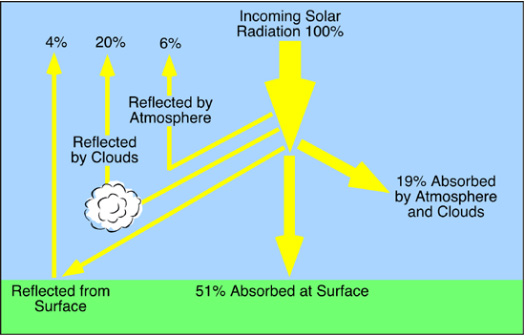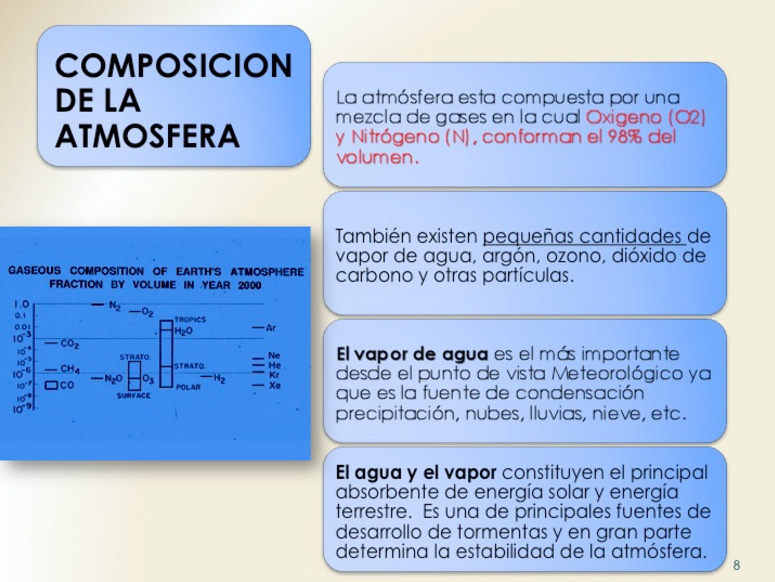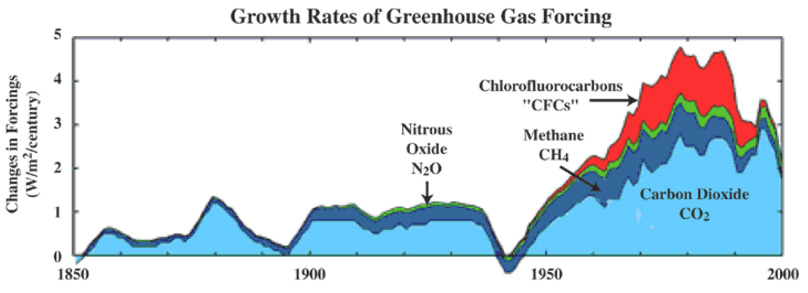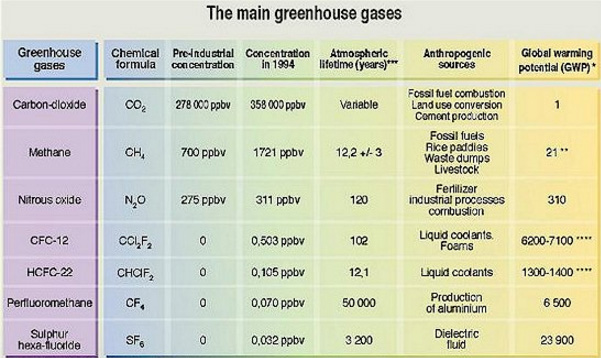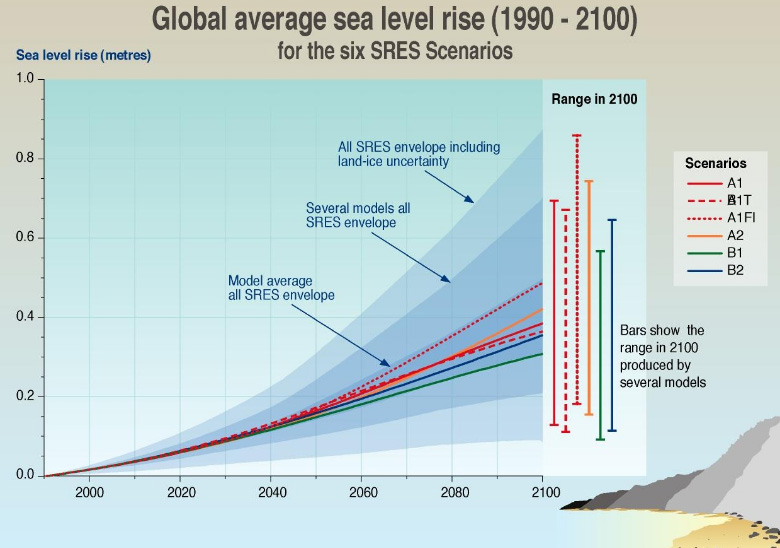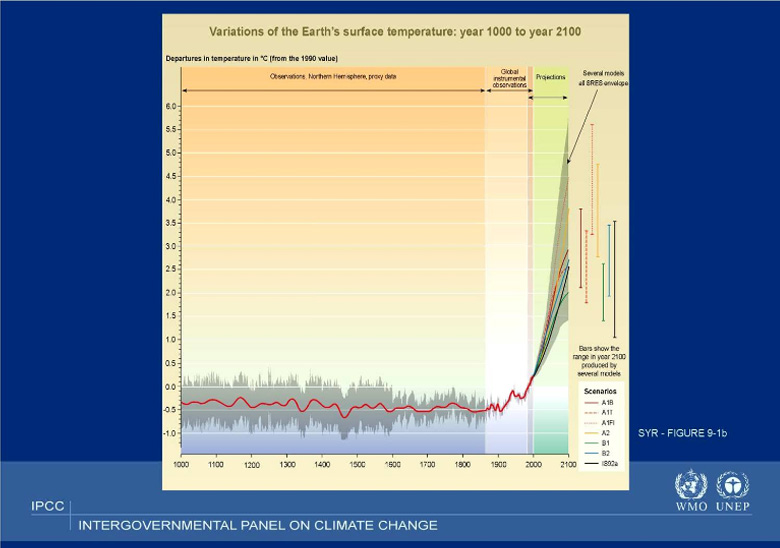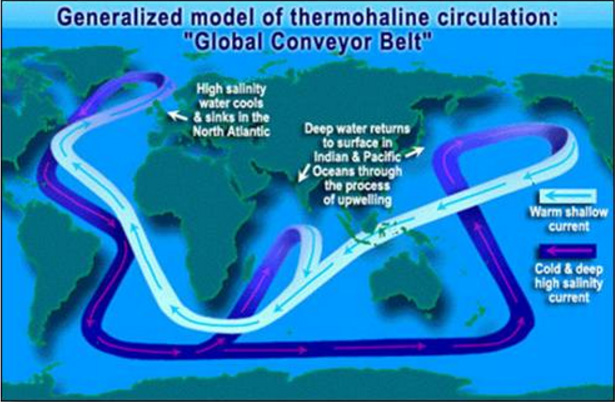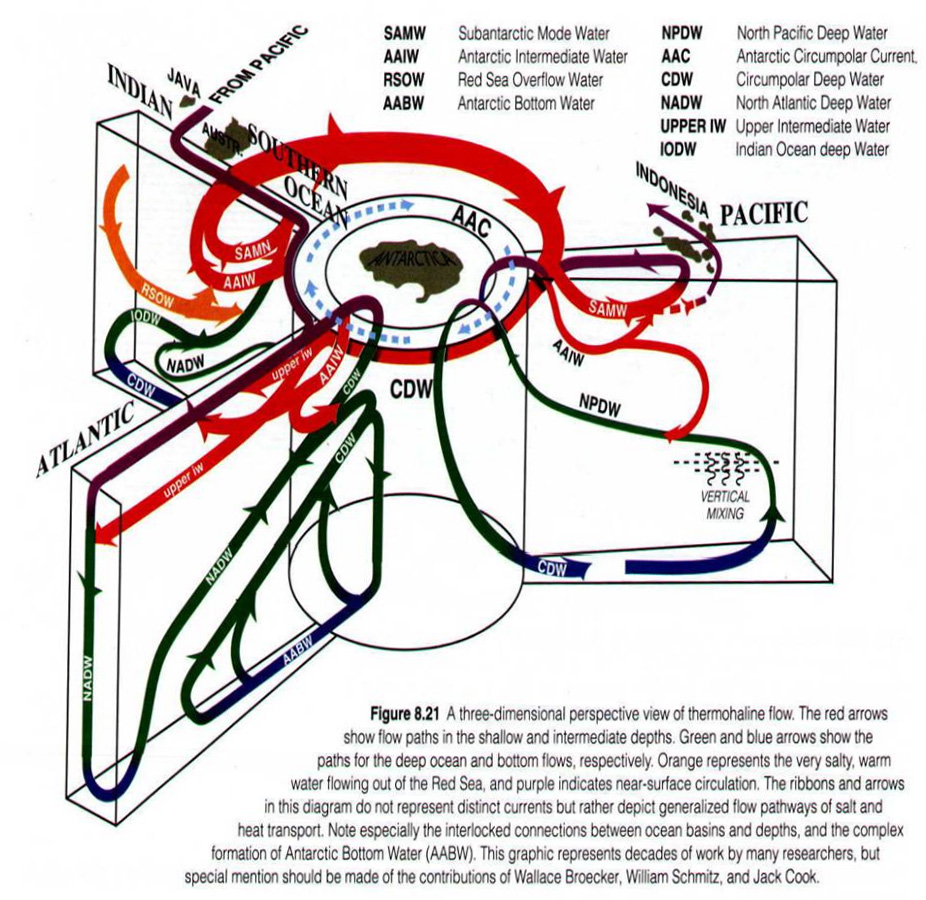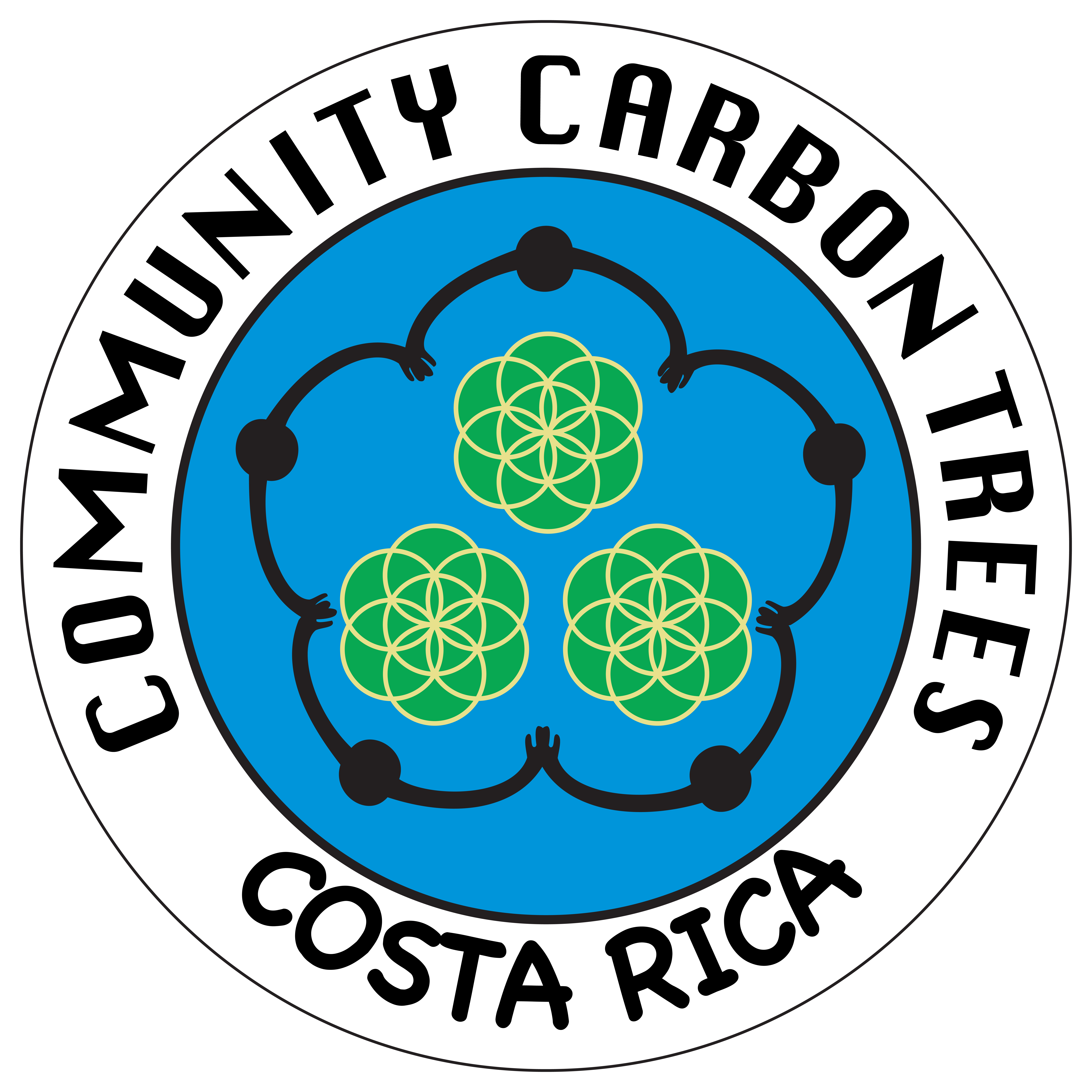

What Is Climate Change?
- What Is Climate Change, Global Warming, The Greenhouse Effect?
- What Gases Make Up The Atmosphere?
- Carbon Dioxide Levels
- Ice Caps Melting
- Is Sea Level Rising?
- Global Warming Effects
- Ozone Hole and Global Warming
- How Do Oceans Absorb Carbon Dioxide?
- How Do Thermohaline Currents Regulate Global Climate?
What Is Climate Change, Global Warming, The Greenhouse Effect?
The atmosphere is warming. This is due to the increase in the amount of carbon dioxide in the air, which has risen by about 25% in the last 150 years. Global warming is primarily caused by the excessive discharge of greenhouse gases in industrialized countries, mostly from burning fossil fuels.
Climate refers to the general composition of a variety of atmospheric conditions over the long term, such as a span of 20 to 30 years. In contrast, "weather" refers to the actual climate conditions in any given short term period.
Climate change is measured with global variations that happen over long scales of time and diverse climatic events. Climate changes are brought about by natural causes and human activity over the last century. The United Nations uses the term climate change to refer exclusively to changes in global climate brought about by human activity as we alter the atmospheric composition through burning fossil fuels and deforestation of large stretches of land.
What Gases Make Up The Atmosphere?
The atmosphere is comprised by a mix of 98% oxygen and nitrogen. There also exist small amounts of water vapor, argon, ozone, carbon dioxide and other particulates.
Water vapor is most important from the meteorological point of view because it produces condensation and precipitation, forming clouds, rain, dew, snow, etc.. Water vapor also absorbs solar and terrestrial energy and serves as the principal source for developing storms and stabilizing the Earth's atmosphere.
The Earth receives electromagnetic radiation from the Sun, ultraviolet, invisible and infrared short waves. In turn, it emits long infrared waves. These two flows of energy should be in balance. Greenhouse gases allow the short wave radiation to penetrate, BUT, they also absorb the long wave radiation that should be leaving our atmosphere. The greenhouse gases act like a blanket around a rock (our Earth) held to the flame (the sun). Once the rock is removed from the flame (night time), the blanket (greenhouse gases) does not allow the rock to cool down as quickly because the heat is trapped inside. This effect is called the "greenhouse effect" or global warming. (GCCPIP 1997).
Carbon Dioxide Levels
View our chart listing some of the main greenhouse gases and their anthropogenic sources along with their pre-industrial concentration now as compared to 1994. Take carbon dioxide for example, which was 278 ppbv and 358 ppbv in 1994, already on its way to 450 ppbv.
Many scientists around the globe are concerned about the levels reaching 400 ppbv, thus heightening the need for creative, non-governmental solutions to planetary problems. Now that we are already exceeding these levels, there is no time to procrastinate! When will we wake up and do something about it?
Ice Caps Melting
Melting polar ice caps as well as melting glaciers in the Himalayas and Greenland is a fact. The only question is how fast? Time will tell.
Is Sea Level Rising?
Coastal communities face immediate consequences of global warming, as experienced by many victims of recent natural disasters. With rising warm tropical waters, it is no longer discussed if sea levels are rising. The only question is by how much?
In addition to rising sea levels, coastal communities are also subject to swells in the ocean waves, which can also be devastating. Fun as surfing big waves is, permanent coastal damage can be expected from significant sustained high waves or ocean swells. Already, waves have increased by average of 3 meters on the Pacific and 2 meters on the Caribbean.
Global Warming Effects
According to the World Health Organization, just a small permanent rise in temperatures can cause a drastic rise in the number of extreme temperature related deaths. Diseases threaten the global community like dengue, malaria, and cholera, as do droughts and starvation caused by scarcity of water and food.
The destabilization of climate from increased greenhouse gasses and rise of temperatures and water vapor in excess quantities creates more frequent and more severe storms with flooding and alternating periods of sustained droughts. The weather becomes highly unpredictable and the delicate balance of Nature is challenged to adapt or die.
Ozone Hole and Global Warming
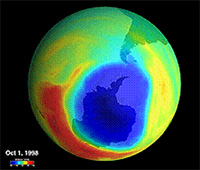
The hole in the ozone layer over Antarctica is also related to global warming or the greenhouse effect. Chloroflurocarbons or CFC's are greenhouse gases that contribute to global warming and destroy the ozone. Normal atmospheric circulation is affected by high temperatures and chemical reactions that produce ozone are deleteriously affected making the hole grow ever larger. Local data measuring the total ozone present in the air in Central America since 1996 shows the ozone levels falling below normal ranges.
To reverse the trends in global warming, it will be necessary for the nations of the world to dramatically reduce their dependence on fossil fuels, reduce the current rate of deforestation, and find methods to capture and store the excess atmospheric carbon.
Sequestering carbon by planting trees is an effective way of combating carbon build-up. It has been estimated that 100 to 200 million hectares of new forest would be needed to sequester 1,000 million tons of carbon annually (Woodwell, 1992). Five million hectares (FAO, 1997) are currently being planted every year. Therefore, an intensified effort over the next thirty years to double the number of plantations would provide a carbon sink capable of sequestering one-eighth of the present global level of carbon emissions.
How Do Oceans Absorb Carbon Dioxide?
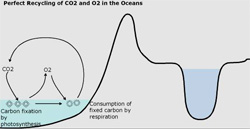
The Oceans are one of the best absorbers of carbon dioxide, sequestering along with trees over 60% of what is currently generated. Vertically, the ocean is structured into two layers: the superficial layer has contact with the atmosphere and can extend up to 50 meters in the tropics and up to various kilometers in the poles, and the underlying layer which is deeper, colder and more saline, and responsible for moving 90% of the oceanic volume. A change in temperature in the oceans can cause a change in global climate by 30 times.
Winds induce the superficial ocean currents to transport heat from the tropical zones to the poles. This is called the Thermohaline circulation or the global conveyor belt that is the ocean.
But the conveyor is delicately balanced and vulnerable and has shut down or changed direction many times throughout Earth's history. Each time the Conveyor belt has shifted gears it has caused significant global temperature changes within decades. Wallace S. Broeker Columbia University Record Reports.
How Do Thermohaline Currents Regulate Global Climate?
The hot superficial currents propel the band including the Gulf current that arrives at the North Atlantic current. In winter, the hot water transfers its heat to the large masses of frigid cold air above Canada, Greenland, and Iceland, which are covered in ice. The masses of air towards the east make the climate in Northern Europe similar to that in North America. Without this functioning system, the temperatures in the Northern Atlantic region would fall by 20 degrees in just ten years.
"However fragmented the world, however intense the national rivalries, it is an inexorable fact that we become more interdependent every day. I believe that national sovereignties will shrink in the face of universal interdependence. The sea, the great unifier, is man's only hope. Now, as never before, the old phrase has a literal meaning: We are all in the same boat."
- Jacques Cousteau, quoted in "National Geographic" [1981]







